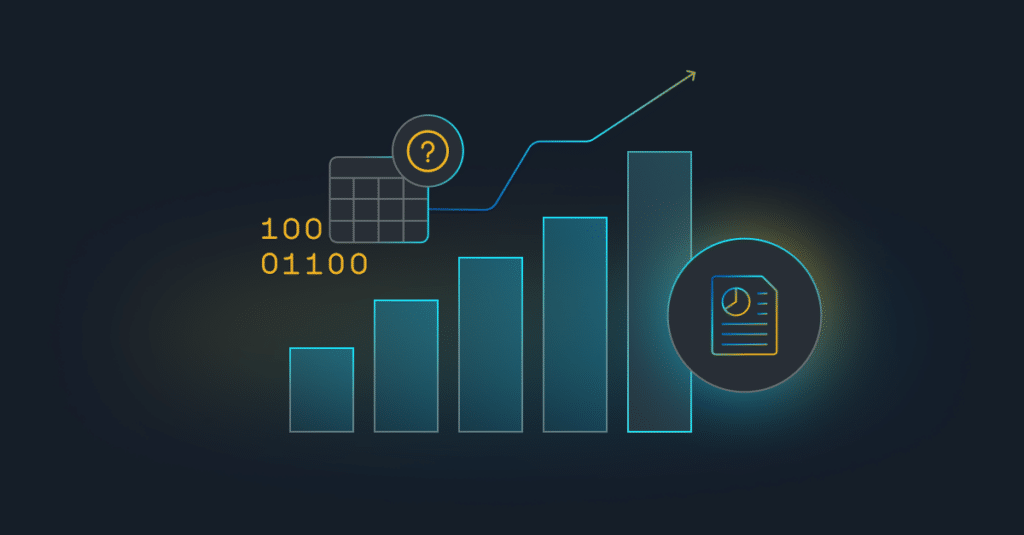Picking Up From Part 1: Why Technical Evaluation Matters
After realizing a semantic layer could solve PrecisionWorks’ biggest data headaches, Alex, a data engineer, moves on to a critical step: evaluating vendors. (Missed the beginning? Catch up on Part 1: The Search for a Smarter Data Stack.) With inconsistent KPIs, fragmented sources, and slow dashboards bogging down the business, choosing the right platform isn’t just a technical decision—it’s a path to enterprise-wide value.
So, how do you make sure the solution you pick:
- Supports both BI and AI workloads?
- Connects to your existing data stack?
- Improves performance and reduces cost?
- Scales with your business?
Alex turns to a Technical Evaluation Checklist to guide his process and surface real ROI.
How to Evaluate Semantic Layers
To make a confident choice, Alex zeroes in on five evaluation categories that balance technical needs with long-term business value.

1. Use Case Compatibility: Does it Support BI, AI and GenAI?
Alex starts by validating whether each solution can handle a wide variety of data use cases—from operational dashboards to predictive analytics to LLM-based data interactions.
Look for:
- Support for BI, ML, and GenAI workloads
- Consistent KPI logic across teams
- AI-friendly metadata and schema standardization
Alex finds a solution that calculates defect rates consistently across departments—no more conflicting dashboards.
2. Connectivity: Can it integrate with Your Cloud and BI Tools?
Next, Alex focuses on integration. He needs a platform that works out of the box with tools like Power BI, Tableau, Excel, Databricks, Snowflake, and Google BigQuery.
Look for:
- Native connectors for BI and SaaS apps
- APIs for custom workflows and LLM interfaces
- Support for hybrid and multi-cloud deployments
By integrating with PrecisionWorks’ CRM and ERP, Sales now gets real-time, unified customer profiles—no more manual exports.
3. Security and Governance: Can It Balance Access and Control?
Data access needs to be flexible—but secure. Alex sets up role-based access control (RBAC) with row- and column-level security to ensure teams only see what they’re allowed to.
Look for:
- Centralized governance model
- Enterprise auth (SSO, OAuth, etc.)
- Policy enforcement across tools
Now every team—from Finance to Ops—can self-serve safely, with full auditability and compliance.
4. Query Performance Management: Does it Make Analystis Faster and Cheaper?
Query lag kills productivity. Alex tests performance optimization features like automated caching, aggregation awareness, and SQL dialect support.
Look for:
- Dynamic query rewriting
- Native SQL translation for each platform
- Materialized views and in-memory acceleration
Dashboards that used to take 3 minutes now load in under 10 seconds—saving time and reducing cloud compute.
5. Scalability: Will it Support Future Data Growth and Complexity?
Finally, Alex ensures the platform won’t become a bottleneck next year by testing query scaling, lifecycle management, and automated tuning under load.
Look for:
- Elastic query scaling
- Performance monitoring with alerting
- Low-maintenance, high-resilience architecture
Now, PrecisionWorks is future-ready—no more performance issues as data volumes grow.
How Technical Improvements Drive Business ROI

Selecting the right semantic layer is only part of the equation. Alex must demonstrate a clear, measurable business impact to gain executive buy-in. He structures his ROI case around the following key areas:
Time Savings for Engineering Teams
Manual tasks like KPI reconciliation and query tuning previously consumed significant weekly engineering hours. With automation in place, technical teams can now focus on higher-value initiatives such as predictive analytics and AI model development.
Accelerated Time-to-Insight
Dashboard performance has improved significantly, with reports loading up to 80% faster. Business users have timely access to reliable data, enabling faster, data-driven decision-making.
Cloud Cost Efficiency
Inefficient query execution previously drove up cloud compute costs. PrecisionWorks has reduced cloud spending by 30% with optimized performance and caching, creating a more efficient and cost-effective analytics environment.
Improved Cross-Departmental Alignment
Inconsistent metrics once led to miscommunication and slowed decision-making. With a centralized semantic layer, teams now operate with a shared understanding of key metrics, improving collaboration between Sales, Finance, and Operations.
Scalable Infrastructure for Future Growth
As PrecisionWorks’ data volumes and use cases expand, the semantic layer continues to scale seamlessly, ensuring the infrastructure remains high-performing without costly reengineering.
Alex supports his case with performance benchmarks, cost reduction estimates, and real-world success stories, illustrating how technical improvements deliver measurable business results.
Next Step: Building the Business Case for Executives
With the technical evaluation complete, Alex is ready to present his findings to executives. His goal? Connect the dots between technical improvements and business results—and show why a semantic layer is the backbone of PrecisionWorks’ modern data strategy.
Coming Up Next in Part 3: Getting Executive Buy-In
In the final post of this series, we’ll follow Alex as he builds a business case for a semantic layer—bridging the gap between technical outcomes and strategic goals like revenue growth and cost savings.
❓ Frequently Asked Questions
A semantic layer is an abstraction layer that standardizes and defines business metrics and logic across different BI and AI tools, enabling consistent, governed analytics.
Evaluate based on compatibility with BI/AI use cases, integration with your existing stack, governance capabilities, performance optimization, and scalability.
Yes. By optimizing query performance and reducing redundant computation, semantic layers can significantly reduce cloud compute spend.
Look for integration with tools like Power BI, Tableau, Excel, Snowflake, Databricks, BigQuery, and support for APIs or LLM interfaces.
Semantic layers provide structured, governed metadata that helps large language models interpret and interact with enterprise data more accurately and securely.
SHARE
Guide: How to Choose a Semantic Layer